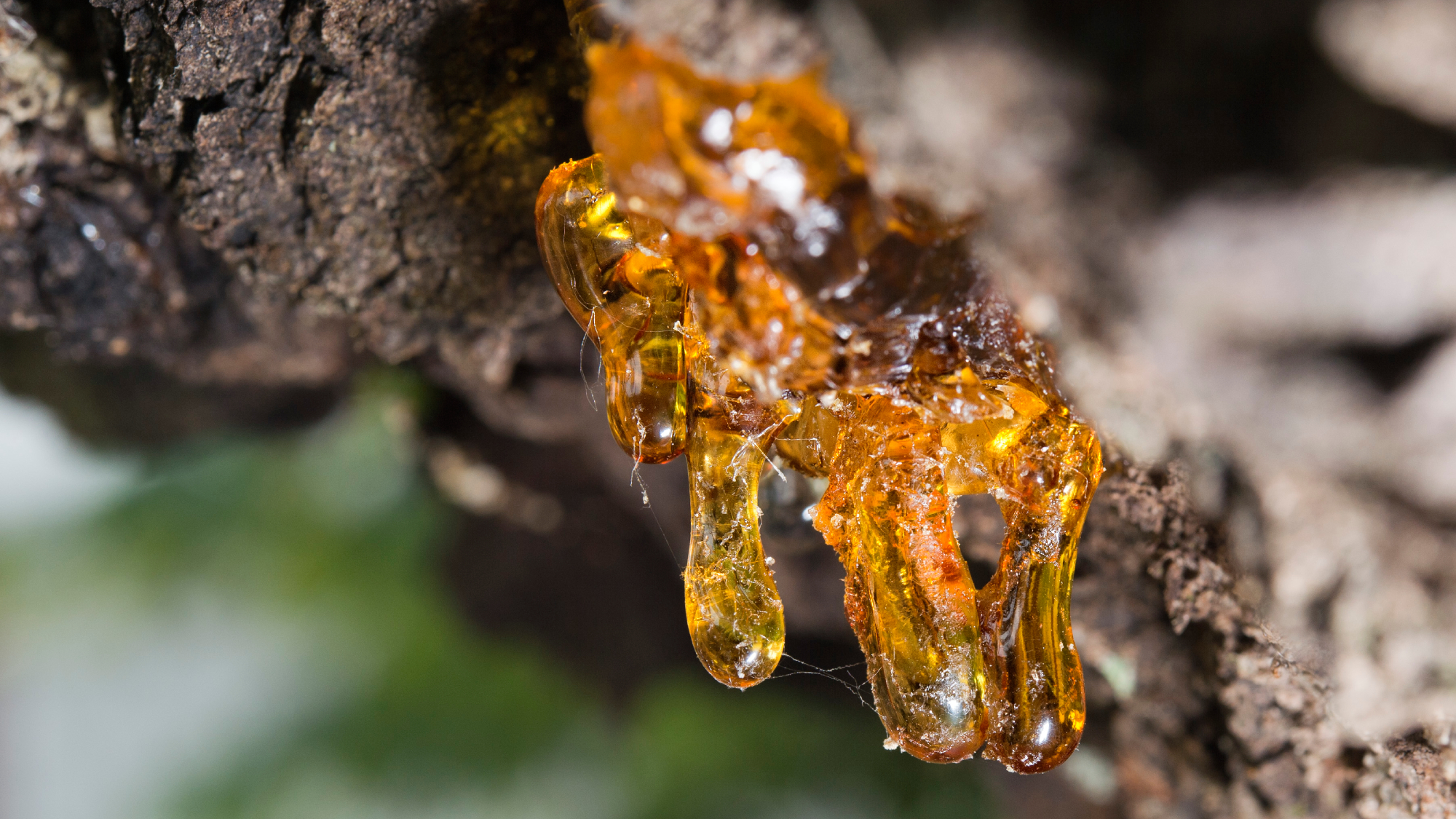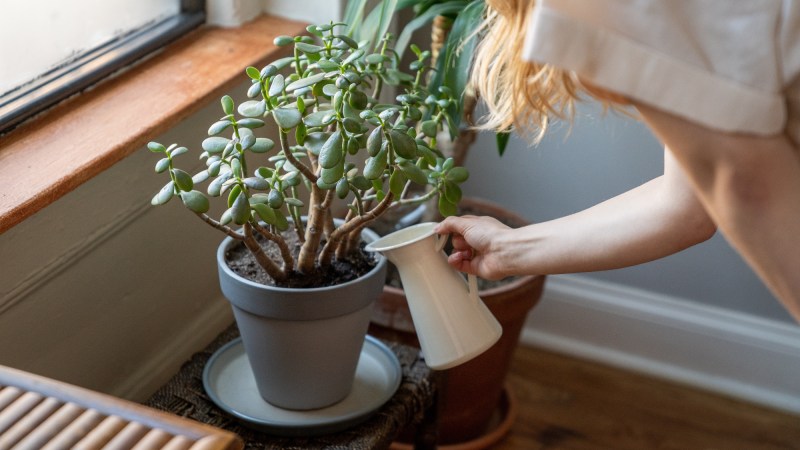

As your car sits parked in the shade of a tree, a silent threat lurks above. Drop by drop, tree sap falls from the branches overhead, landing on your vehicle’s formerly sparkling hood. You’ll want to get it off before it’s too late.
At first glance, the sugary liquid seems harmless, but it can seriously ruin your vehicle’s paint job and body over time. First, it’ll bond to the clear coat, then penetrate down to the paint, and ultimately reach the metal underneath, leading to rust.
Fortunately, if you notice the goo in time and spend a few minutes removing it, you can save your car from corrosion. Follow these easy steps, and you’ll be able to get tree sap off your vehicle in no time.
How to remove tree sap from your car
The easiest way to avoid dealing with tree gunk is to not park under a tree. But sometimes that’s not a viable option, and even if it is, wind can blow sap onto your shiny chariot.
Whether the sap falls on glass or paint poses two wildly different scenarios, explains Larry Kosilla, life-long car detailer and founder of AMMO NYC. If the goop made it onto your windshield, you’re in luck, he says: “You can use a razor blade extension and just kind of shave it off.”
[Related: The right and wrong ways to clear ice and snow from your car]
But a razor blade is not an excellent option if you’re removing sap from the roof or hood of your vehicle—especially if you’re inexperienced or anything but extremely careful. “If you are not good, then you can cut into the paint,” says Jonathon Klein, the managing editor at The Drive, a car magazine owned by PopSci’s parent company Recurrent Ventures.
If tree blood is splattered across your car’s body, don’t do anything before you hose it down with water to remove dirt and debris. Afterward, dry your vehicle with a microfiber towel—this type of lightweight cloth is easy to wash, non-abrasive, and won’t leave lint behind like a cotton towel.
“You don’t want to use any abrasives or anything that has a high grit count,” Klein says. “What you have to be aware of is to be careful throughout the process and not scratch your car’s paint.”
After your cruiser is clean, you can start exploring your sap-removal options. Some classic household items can easily get tree sap off your car, but be warned—you should only use them sparingly, as they can damage your ride’s finish.
Isopropyl alcohol
The first household item you may use to remove sap from your car is 70 percent isopropyl alcohol. You can usually find this concentration in rubbing alcohol and hand sanitizer.
Be careful, though: This disinfectant can be harsh and damage the clear coat of your car, but you can use it now and then to get rid of tree sap without completely ruining its paint job.
Make a mix with a 1-to-1 ratio of 70 percent isopropyl alcohol and water and pour it into a cotton ball. Use it to cover the sap and let it sit for a few minutes. Alternatively, you can do the same with some alcohol-based hand sanitizer—if it’s thick enough, you can forgo the cotton ball and apply it directly to the sap. Finish by wiping your vehicle clean with a wet cloth.
White vinegar
If white vinegar is the only ingredient you have on hand to remove stubborn tree sap, you can apply the same process mentioned above. But you should still beware: “Vinegar is on the acidic side and could be causing some damage to your car,” Kosilla says
Make a 1-to-1 mix of water and white vinegar and spray it on the sap. Let it sit before cleaning everything with a wet microfiber cloth.
Hair dryer or heat gun
If you’re not willing to risk pouring chemicals onto your car-baby, Klein recommends a heat gun. It’s a safe option used by beginners and experienced detailers alike.
“It is the easiest way that I have found to pull sap off a car,” he says.
If you don’t have a heat gun at home and don’t want to get one, Klein says you can also use a hair dryer. Keep in mind this hairdressing tool normally doesn’t reach the same temperatures as a heat gun, so you may require a higher heat setting or a longer exposure to get rid of the tree sap sitting on your vehicle.
Set the heat gun or hairdryer to low or medium and hover it about 6 to 10 inches above the sticky glob. The exact distance will depend on the temperature you’re using—make sure you’re close enough to warm up the sap but not so close that you melt the clear coat. Keep a steady heat flow for one to two minutes or until the sap gets gooey again, then remove it with a microfiber cloth. If it doesn’t come off, repeat the process.
When using a heat gun, don’t be tempted to save yourself time by using more heat or applying it for longer than the suggested time, as temperatures 300 degrees Fahrenheit and above could damage your cruiser’s clear coat and paint.
Dedicated sap-removers
Commercial products like Bug Be Gone and WD40 are multi-use cleaners that can remove tree sap, other plant residue, and animal droppings.
Start by making sure your car is cool to avoid any discoloration. Only then, spray one of these multi-cleaner products on the sap spot and let it sit for about two minutes. After that, you should be able to wipe away the tree gunk with a wet microfiber cloth.
How does tree sap damage your car?
Typically, cars have five layers of paint and finish. The first one is an electrocoat, or e-coat that protects the metal against corrosion, and on top of that sit layers of primer, base coat, and the actual paint that gives your ride its color. The entire job is sealed by a transparent coating that shields your vehicle from the elements. If you’re a dedicated car owner, your machine might also be protected by a coat of wax, which provides a glossy, shiny finish.
[Related: Tree resin could replace fossil fuels in everything from printer ink to shoe polish]
When a droplet of sugary sap plops onto your steel chariot, it will instantly stick to the wax and/or clear coat layers, and the longer it sits there, the harder it’ll be to remove. Car paint is designed to expand and contract in response to heating and cooling. As it does this and the sap hardens, the sticky stuff will become rooted into the paint.
“These thumb-size globules will get harder and harder to remove because they bond with the clear coat,” Klein says.
This is why timing is everything when it comes to removing tree sap from your beloved cruiser. “Speed is of the essence,” Kosilla says. “So get to it quickly.”















